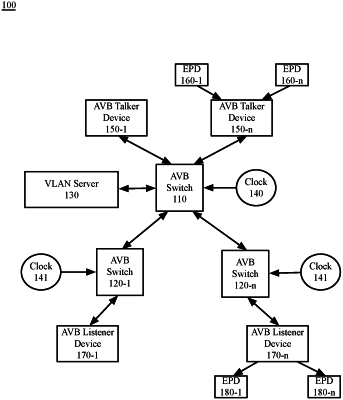| CPC H04L 65/80 (2013.01) [H04L 12/4641 (2013.01); H04L 47/6215 (2013.01); H04L 47/724 (2013.01); H04L 65/61 (2022.05); H04L 65/65 (2022.05); H04L 65/70 (2022.05)] | 20 Claims |

|
1. A method performed at least partly by an intermediate device in a network, the method comprising:
identifying a first source device that is configured to transmit a first traffic stream in the network;
identifying a second source device that is configured to transmit a second traffic stream in the network;
determining that the first device has one or more first receiving devices that are subscribed to receive the first traffic stream from the first source device;
determining that the second source device does not have any subscribed receiving devices;
receiving a first advertisement packet from the first source device that advertises first attributes associated with the first traffic stream, wherein the first attributes indicate an availability of the first traffic stream or a third traffic stream associated with the first device;
receiving a second advertisement packet from the second source device that advertises second attributes associated with the second traffic stream, wherein the second attributes indicate an availability of the second traffic stream or a fourth traffic stream associated with the second device; and
prioritizing transmission of the first advertisement packet over the second advertisement packet based at least in part on the first source device having one or more first receiving devices that are subscribed and the second source device not having any subscribed receiving devices.
|